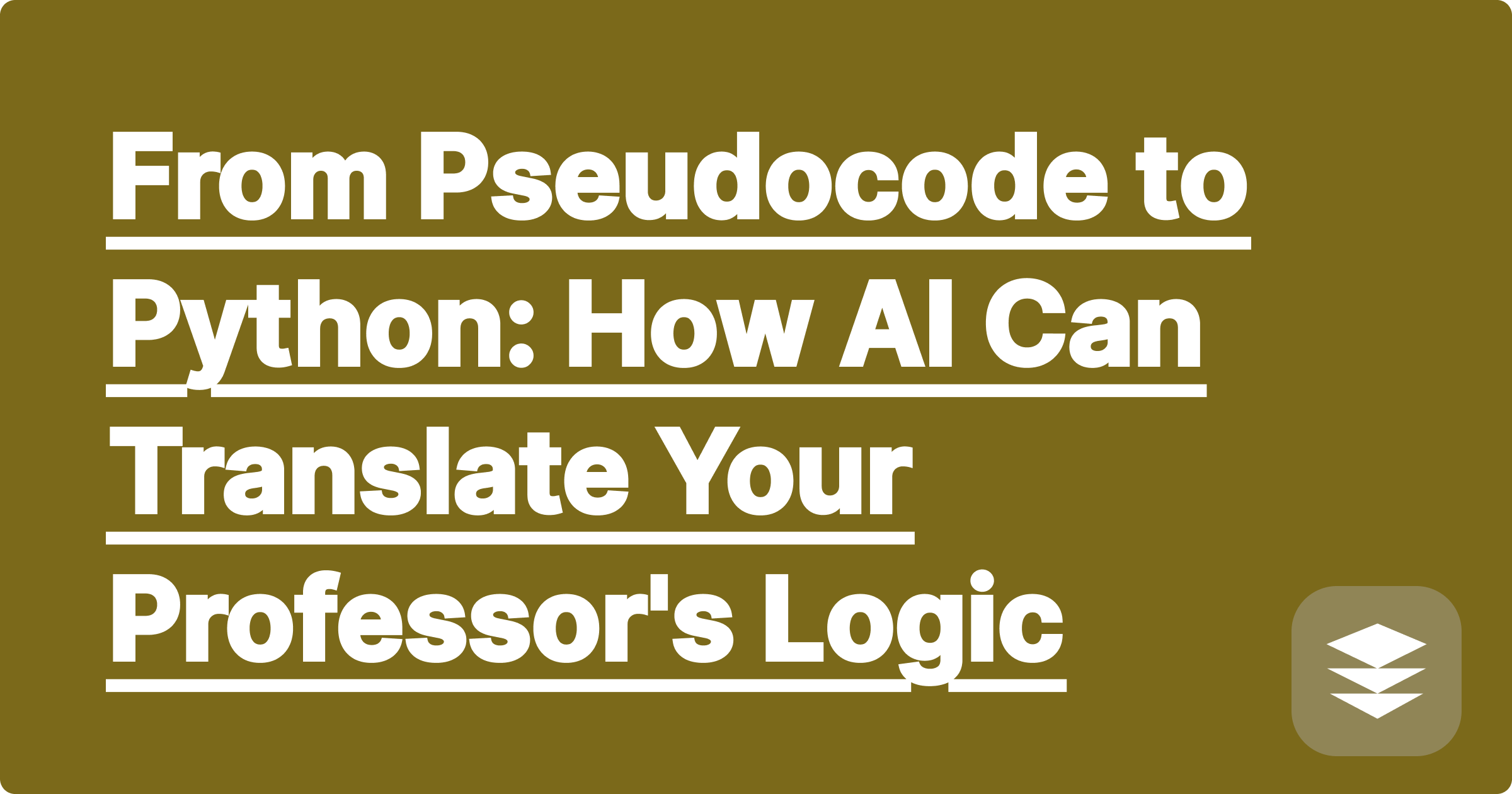
You're in a Data Structures or Algorithms class. The professor is at the whiteboard, masterfully explaining a complex algorithm like Dijkstra's or Merge Sort. They're not writing in Python, Java, or C++. They're writing in pseudocode—a high-level, informal description of the logic.
You understand the concept on the board. It makes perfect sense. Then you get back to your dorm to start the assignment, and you freeze. How do you translate for each vertex v in G.Adj[u] into actual, working Python code? This is the "pseudocode gap," and it's where many students get stuck.
A powerful AI tool like GPAI Solver can act as your personal pseudocode to python converter ai, bridging the gap between your professor's whiteboard logic and a functional program.
Pseudocode is powerful for teaching because it ignores picky syntax and focuses purely on the algorithm's logic. But this is also what makes it hard to implement.
Instead of struggling to find the right syntax on Stack Overflow, you can use AI to do the translation instantly. A tool like GPAI Solver is trained on both pseudocode conventions and multiple programming languages, making it the perfect bridge.
UnderstandingYou might write code that works but not know why.AI generates commented code that explains each line.LanguageYou're stuck with whatever language you know best.Can translate to Python, Java, C++, etc.
The process is remarkably simple and will save you hours.
Before: A Photo of a Whiteboard
[Image: A photo of a whiteboard with handwritten pseudocode for a binary search algorithm. It's slightly messy and uses informal language like 'if target is found, return location'. Alt-text: Whiteboard pseudocode for an algorithm.]
After: AI-Generated Python Code
[Image: A screenshot of clean, perfectly formatted Python code in the GPAI interface. Each line has a corresponding comment, e.g., '# Check if the target is present at the mid' next to the 'if' statement. Alt-text: A pseudocode to python converter AI showing the translated, commented code.]
A: Yes. The AI's goal is to create a direct and accurate implementation of the provided pseudocode. If the algorithm itself is efficient (e.g., O(log n) for binary search), the generated code will reflect that efficiency.
A: Absolutely. You can simply change your prompt to "Translate this into Java" or "Translate this into C++." A good AI tool is multilingual.
A: It's a tool for overcoming a specific barrier: the syntax. You already understood the logic from the lecture. The AI is handling the tedious part of converting that logic into precise syntax. By studying the AI's commented code, you are actively learning how abstract logic maps to a real programming language, which is a valuable skill in itself.
Stop letting the gap between pseudocode and functional code slow you down. Use AI as your expert translator to turn your professor's abstract logic into tangible, working programs. This allows you to spend less time fighting with syntax and more time understanding the beautiful, powerful ideas behind the algorithms.
[Ready to translate your notes into code? Try GPAI Solver now. Upload a picture of any pseudocode and get a working Python script in seconds. Sign up for 100 free credits and accelerate your learning.]
Why Your CS Degree is 50% Theory: How to Bridge the Gap with AI
Debugging in Your Head vs. AI: A Smarter Way to Find Bugs
From Pseudocode to Python: How AI Can Translate Your Professor's Logic
Ace Your Technical Interview: Using GPAI to Practice DSA Whiteboarding
Understanding Operating Systems: Visualizing Semaphores and Deadlocks with AI
Your Personal AI Teaching Assistant for Machine Learning Concepts
How to Document Your Code Instantly with an AI Comment Generator
The Best Way to Learn Computer Networking: From OSI Model to Packet Tracing
Database Design Made Easy: How AI Can Help You with ER Diagrams and SQL
Surviving Your Software Engineering Group Project with AI-Powered Tools